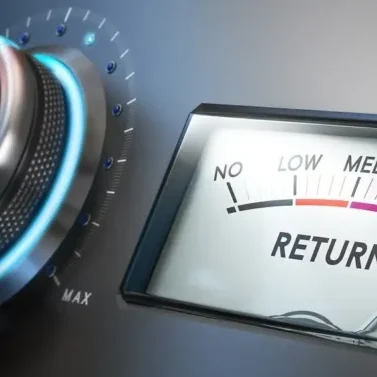What are Seller’s Discretionary Earnings?
Summary: Seller's discretionary earnings (SDE) is a metric used commonly by business buyers and sellers to determine the market price of a small business. This article describes how this metric is calculated, how it works, and its importance in small business acquisitions. We cover the following:
- What are the seller's discretionary earnings?
- SDE and small business valuations
- What are add backs?
- Disagreements over the SDE
- Should you get a Quality of Earnings report?
- SDE and business acquisition loans
- Alternatives to the SDE
1. What are Seller's Discretionary Earnings?
Seller's discretionary earnings is a metric that is commonly used in the valuation of a small business during an acquisition. In general, the SDE is the earnings of the business before the owner's benefits. While there is no standard definition of the term, most in the industry agree that SDE is the company's earnings before:
- Income taxes
- Non-recurring income and expenses
- Non-operating income and expenses
- Depreciation
- Amortization
- Owners compensation, adjusted for single owner
- Other discretionary expenses (e.g., charity contributions, etc.)
The objective of the SDE metric is to help potential owners determine what they can reasonably expect their earnings to be after acquiring the company.
2. SDE multipliers and company valuation
The SDE is important because the acquisition value of the company is often determined by a multiple of this amount. In our opinion, looking at the SDE of a business is more important than revenues. High revenues can be deceiving because companies can have high revenues but low SDE.
Here are some examples of company valuations based on an SDE multiple. The examples are taken from "The Business Reference Guide" and represent industry averages. The actual figures for a specific business may be different.
| Industry | Valuation |
| Freight carriers | 2 to 3 x SDE plus market value of assets |
| Auto body repair | 1.5 to 2.3 x SDE plus inventory |
| Bars / nightclubs | 2.5 x SDE plus inventory |
| Car washes | 3 x SDE plus inventory |
| Construction | 1 to 2 x SDE plus inventory |
| Plumbing companies | 2 to 2.5 x SDE plus inventory |
| HVAC companies | 2 to 3.5 x SDE plus inventory |
| Laundromats | 3 to 5 x SDE plus inventory |
| Restaurants | 1.5 to 4 x SDE plus inventory |
| Machine shops | 3 to 5 x SDE plus inventory |
| Metal fabrication shops | 4 to 6 x SDE plus inventory |
| Funeral homes | 1.5 to 3 SDE (no inventory) |
| Gas stations | 2.5 to 3 SDE plus inventory |
Examples
Here are two examples that explain how to use these valuation multiples:
a) Laundromat
A laundromat with an SDE of $300,000 could be valued between $900,000 and $1,500,000 plus the inventory. The math works as follows: $300,000 x 3 = $900,000 and $300,000 x 5 = $1,500,000.
b) Machine shop
A machine shop with an SDE of $500,000 could be valued between $1,500,000 and $2,500,000, plus the cost of inventory. The math works as follows: $500,000 x 3 = $1,500,000 and $500,000 x 5 = $2,500,000.
Keep in mind that these calculations provide a general idea of valuation. Many other criteria not taken into account by this method also influence the market price. These criteria include local business conditions, industry trends, and so on. The only way to get the accurate street cost of a business is to have a professional appraiser review it.
3. Add backs to the SDE
Since a company's valuation is based on the SDE, sellers have an incentive to present the highest possible value. Sellers can adjust the SDE metric upwards by adding back certain expenses. Sellers often add back expenses they believe won't affect a new owner. These line items are usually referred to as "add backs." Add backs can include charitable donations, owner benefits, some travel expenses, and so on.
On the other hand, buyers want the SDE to represent the earnings they expect to get. Buyers have an incentive to calculate the lowest possible SDE value since it lowers the company's market price. Buyers usually examine the SDE figure to remove "add backs" they believe are incorrect. Consequently, they adjust the SDE downwards.
4. Disagreements over SDE
It's common to have disagreements about the SDE among the buyer, the seller, and the finance company underwriting the opportunity. This situation creates areas of disagreement that need to be negotiated. Here are two common areas of disagreement.
a) Multiple owners
The calculation of the seller's discretionary earnings allows you to include the compensation of one owner. This method creates a problem when the business has multiple owners deriving a benefit. For example, are all the owners working and taking a salary, or are they "hands-off"? If all the owners work in the business, what is the market cost of replacing them with a salaried employee? This issue is resolved with add backs to the SDE. It's best to get advice from an expert, such as a CPA, when making these determinations.
b) One-time expenses
One-time expenses may distort the calculation of the seller's discretionary earnings. Not every expense labeled as a "one-time expense" occurs a single time. For example, updating technology or a specific large marketing effort is often labeled as a one-time expense. The reality may be different, though. Technology needs to be upgraded regularly, and marketing efforts should be ongoing.
5. Should you get a Quality of Earnings report?
A Quality of Earnings (QoE) report helps buyers evaluate the target business's financial health and performance more accurately. They typically are written by CPAs with experience in financial due diligence. The report tries to identify problem areas that could affect the business, including:
- Sustainability of revenues
- Accounting issues
- Financial risks
- Unusual transactions
- Concentration issues
- Related transactions
A QoE report can be useful when negotiating the company's SDE with the seller's team and your lender. It helps identify expenses that may need to be added back and revenues that may need to be subtracted. Ultimately, it will help determine a more realistic estimate of SDE.
We believe most small business buyers should get a QoE report. Reports can be expensive, so the transaction size has to justify the cost of the report. Lastly, if you decide to get a QoE report evaluation, work with a company with experience in small business acquisitions.
6. How does SDE impact your ability to get financing?
Most buyers use an SBA-backed acquisition loan to finance buying a business. As part of underwriting the deal, the finance company reviews the company's information, orders an appraisal, and determines the valuation of the business. The lender uses this valuation assessment, among other metrics, to determine how much financing to offer.
If the buyer's offer to the seller is above this valuation, the buyer has to renegotiate terms or make up the difference. If the buyer is unable to renegotiate and wants to proceed with the acquisition, the difference must be added to the buyer's equity injection.
Here is one example of this situation. Transactions using SBA-backed financing require a minimum equity injection of 10% of the transaction cost. Assume that there is a valuation difference of $400,000 between the seller and the buyer. If the price is not renegotiated, the buyer needs to add $400,000 to the 10% equity injection they are already contributing.
7. Alternatives to seller's discretionary earnings
Although popular, SDE is not the only metric you can use to determine the valuation of a business. Some experts prefer to use a multiple of Earnings before Interest, Taxes, Depreciation, and Amortization (EBIDTA). EBIDTA is similar to SDE but does not have the owner's compensation as an add back. Consequently, EBIDTA is smaller than SDE.
Some buyers prefer valuations based on a multiple of sales (less sales taxes). This metric has the advantage of being easy to figure out. It may be useful to some buyers with knowledge of the industry and the type of business that they are acquiring.
Want to finance a business acquisition?
The first step to work with us is to submit this form. Once we review it, one of our associates will contact you to discuss the specific details of your acquisition.
Editor's note:
This information should not be considered legal or financial advice. Given the complexity of business acquisitions, this document is not guaranteed to be 100% accurate or cover every potential option. However, we make every effort to provide you with the best information. If you have comments, suggestions, or improvements, contact us via LinkedIn.






